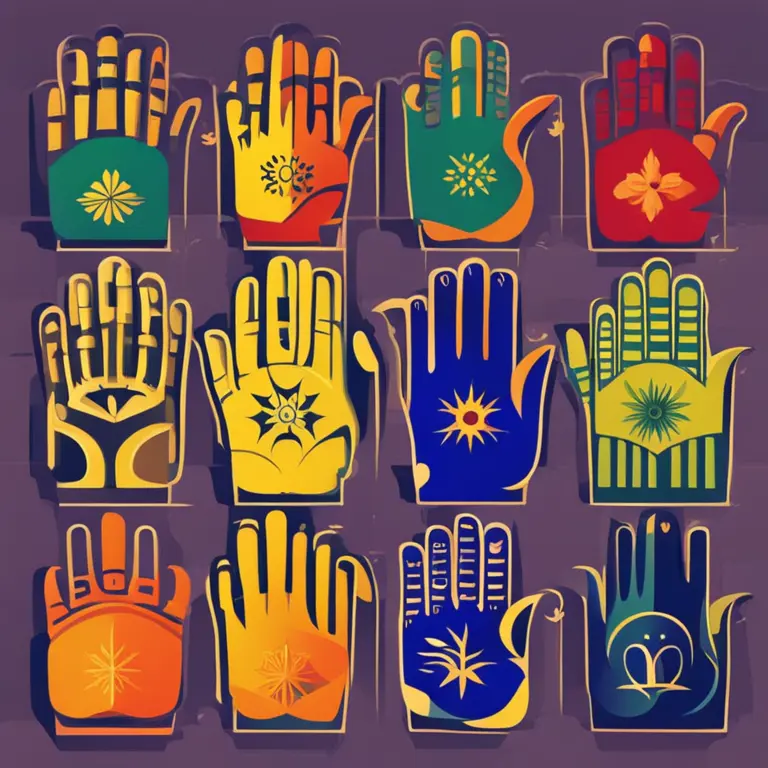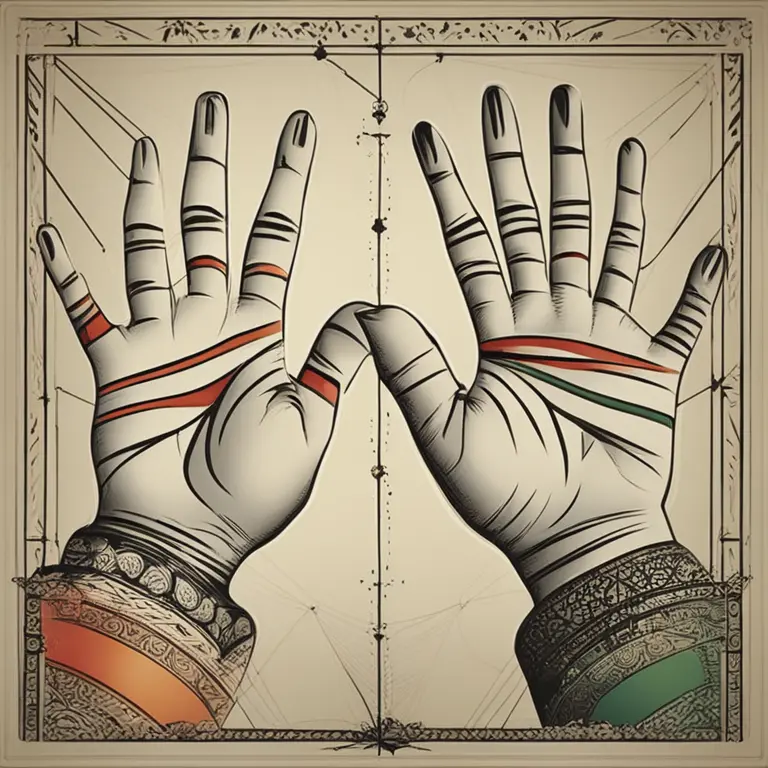
Which Hand to Read in Palmistry: A Guided Overview
Delve into the practice of palmistry and learn the significance of choosing the right hand for an insightful reading.
article by Nora Pennington
Palmistry’s Hand Preference
Palmistry, or chiromancy, has been a tool for self-discovery and foresight for centuries. It is a belief system that extrapolates personality traits, future prospects, and hidden potential through the analysis of palm lines, shapes, and configurations. A common query that surfaces is whether palmists should read the left hand or the right hand. The answer, nuanced by traditions and modern takes, holds the key to a deeper understanding. As palmistry evolves, it continues to offer a personalized glimpse into one's life journey.

The Dominant Hand: The Mirror of Now
In contemporary palmistry, the dominant hand, typically the one used for writing and daily tasks, is considered the dynamic interpreter of your current life. It reflects the conscious mind, personal achievements, and accumulated experiences. Reading the dominant hand therefore offers insights into the sum of your actions and choices, painting a picture of where you stand presently and the consequences of your volition.

The Non-Dominant Hand: The Blueprint of Potential
In contrast, the non-dominant hand is often associated with the subconscious, innate potential, and characteristics one is born with. This hand serves as a blueprint, representing latent qualities and offering an undisturbed view of innate abilities. Some practitioners believe that it holds information about one's karma, predestined challenges, and life lessons, providing a preliminary sketch of what could be.

Integration of Both Hands
While novice palmists may adhere strictly to the dominant/non-dominant dichotomy, seasoned readers emphasize the integration of both hands. In this integrated approach, a full narrative is constructed by cross-examining markers from both palms, thus weaving a coherent tale that encapsulates past dispositions, current situations, and future possibilities, bridging the gap between potential and actualization.

Gender-Specific Traditions
It's important to mention gender-specific practices that exist within the traditional schools of palmistry. Some cultures abide by the rule that for men, the right hand is read, while the left is examined for women. This gendered approach often denotes societal roles and perspectives from ancient times when the practice was conceived, yet holds less prominence in current, more egalitarian interpretations.
Personalized Readings for Accuracy
Highly personalized readings that focus on both hands, regardless of gender, are increasingly favored. The dialogue between a person's potential and their real-world experience can lead to profound realizations and guide constructive actions. Given that lines and signs on the palms can change over time, reflecting personal development, regular readings can map out growth and transformation, providing an ever-evolving narrative of one's life.
Advancements in Palmistry Technology
Technological advancements have even found their way into the ancient practice of palmistry. In 2024 and beyond, software has been developed to offer digital palm readings, successfully parsing lines and mounts with remarkable accuracy. This approach combines traditional knowledge with data analytics to provide nuanced readings that might be less biased than a manual interpretation, yet many enthusiasts still prefer the intuitive human touch of a skilled palmist.
Published: 1/11/2024
Modified: 1/12/2024
More predictions
Come back here soon to learn more about yourself and your future


Can Palmistry Predict Your Path Incorrectly?
Delving into the accuracy of palm readings, this article examines whether palmistry can lead to incorrect predictions about one's life and destiny.


The Efficacy of Palmistry: Real Insight or Fancy?
Delve into the validity of palmistry as a form of divination. Is there a truth behind the lines on our palms, or is it just a charming fancy?


Palmistry: The Historical Overview
Delve into the dawn of palmistry and trace its journey through the corridors of time, uncovering the roots of this ancient practice.